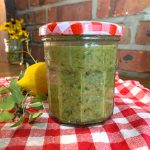Over the past few weeks in the community garden, I’ve heard many people say some version of, “I’m so happy to have my hands back in the soil.” Gardening is good for wellness. It reconnects us to the earth, to nature, and to our natural state as human beings.
All the sensory experiences associated with gardening or just being outdoors are calming—the scent of the soil, the texture of the plants to our touch, the warmth of the sun on our skin, the colors of the flowers focused in your eyes, the sound of the wind moving through the trees and the birds humming in our ears.
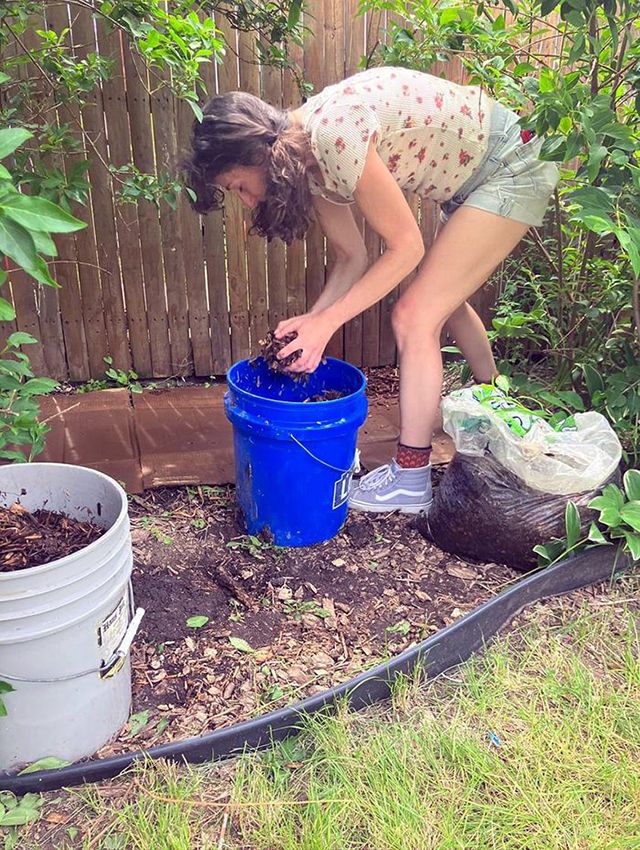
Hands in the Soil, highly recommended.
For me—and I think I can safely say for many others—gardening is therapeutic because it brings you into the present moment. It can be simple and freeing, with no need for overthinking. That’s what I enjoy so much about my time in the garden – the repetitive process and the quick, satisfying rewards of pulling a weed or potting a plant. This helps shift my mind into the right place, and I feel grounded.
And if you don’t have a garden space, just get outside and get close to the earth.
The other day, I was in Prospect Park, lying flat on my back with only a thin sheet between me and the damp soil. I felt the coolness. I looked up at the tree branches as the leaves waved back and forth. I saw shadows and shades of green overlapping like a dance performance just for me. I saw a bird’s nest—it was large, and a few birds passed by. Finally, after two days, my nervous system returned to baseline. What a relief.

Sunday looks perfect for a park visit. Here are a few of my recs, off the beat and quiet:
I hope you find some calm this weekend. Get grounded with the soil and all the things us humans were supposed to be immersed in.
Follow me on Instagram @theglorifiedtomato—on the ground and growing.
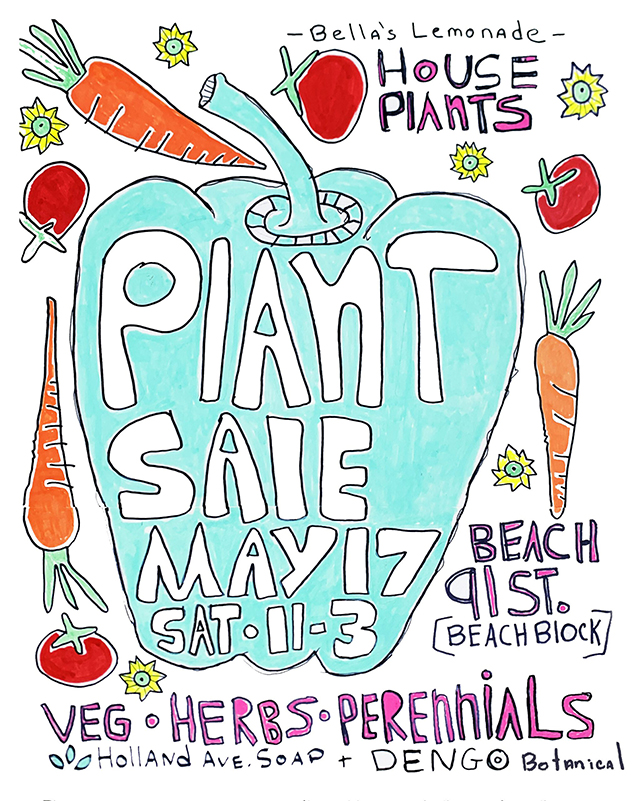
This Saturday, May 17, from 11 a.m. to 3 p.m., visit the Beach 91st Street Community Garden for our Plant Sale Fundraiser! Soak in the spring, connect with neighbors, and make a day of it.
We’ll have a mix of plants to inspire your garden. There will be veggie starters and culinary herbs, perennials, including walker’s low, autumn joy, milkweed, daylily, and coastal grasses. We’ve also got some houseplants and garden pots!
Adding to the fun this year:
- Holland Ave Soap Co. (@hollandavesoapco) will be on-site, offering ocean-inspired cold-process bar soaps—some made with purified seawater, others infused with herbs grown right here at the Beach 91st Garden. Clean, coastal, and handcrafted by our leadership member, Mike Benigno.
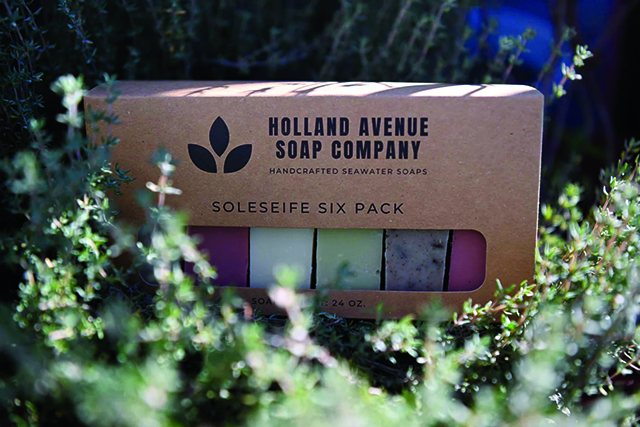
Photo by Mike Benigno
- Dengo Botanica (@dengobotanica) will bring their botanical treasures—plant-powered skincare rooted in Brazilian traditions. Each product is handcrafted with herbs, flowers, and intention to naturally nourish both skin and spirit.

Photo Courtesy of Dengo Botanica.
- Bella’s Lemonade Stand – run by the young entrepreneur, offering fresh, tart lemonade served with a bright smile!
Stay awhile, bring a picnic, and spend a relaxed afternoon in the garden. It’s a great chance to meet new neighbors, catch up with friends, and enjoy the calm, surrounded by plants, birds, and community magic.
Proceeds from the fundraiser go toward enhancing the garden’s infrastructure and supporting our community events and educational programming. The Beach 91st Street Community Garden is grateful for the continued support from our neighbors and the greater Rockaway community.
Follow @beach91communitygarden on Instagram to stay in the loop on community outreach, garden projects, and all things growing. Keeping Rockaway Green Since 2009.
After my stamping art project with compostable foods, including the potato, I started to wonder… How do you grow a potato from a potato?
I’m a gardener, and I’ve never grown potatoes. Embarrassing to admit, but here we are.
I checked in with fellow Beach 91st Street Community Garden members last Sunday during our second meeting of the season. Kilee and Dan have both grown potatoes from sprouting spuds found right in their kitchens. They confirm it’s totally easy.
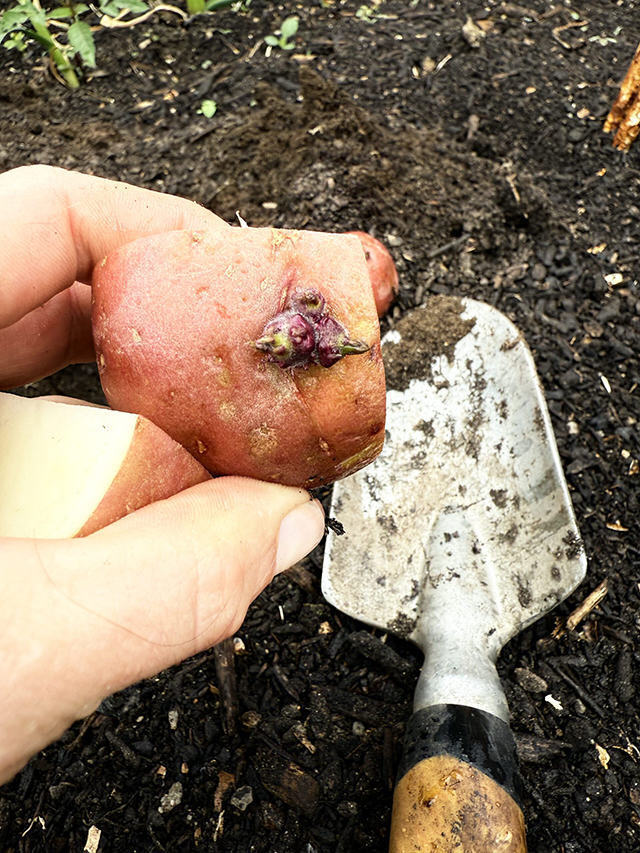
Store-bought potatoes (Red Bliss) like this aren’t as disease-resistant as certified seed potatoes since they’re grown for mass production, but they’re free, reusable, and so far, my fellow garden members haven’t had any issues!
Potato Planting Guide:
- Cut the “potato seed”: If the sprouting potato is big and has multiple “eyes” (those sprouty things), cut it into chunks. Each chunk should have at least one or two eyes. Let the cut pieces sit out in a dry spot for 1–2 days so the cut sides scab over. This prevents rotting.
- Plant the chunk: Plant your potato piece about 4 inches deep, eyes facing up. If planting in a pot, start with a few inches of soil, plant the potato, then cover with more soil.
- Water & wait: Keep the soil moist but not soggy. In a week or two, leafy green shoots will emerge!
- Hilling: As the plant grows, keep adding soil to cover the lower stems (called “hilling”). It encourages more tubers to form.
- Harvest time: Once the plant flowers, baby potatoes are forming! For full-sized potatoes, wait until the leaves yellow and die back, usually around 90–120 days. Dig gently, like you’re unearthing an Irish treasure.
In Rockaway (Hardiness Zone 7b), the ideal time to plant potatoes from eyes is between late March and early April, when soil temperatures consistently reach at least 40°F. But my garden friends say it now works too, especially since it’s been unseasonably cold this spring. Mine potatoes will be ready in August.
Another tip I picked up at the garden meeting: the longer you leave the potato in the ground, the bigger it gets. And as Dan said, one of the best things about growing potatoes is that you can harvest them as needed—just dig up what you need for dinner and leave the rest in the ground for later.
Why do potatoes sprout in the house anyway? Because they’re still alive and respond to warmth, darkness, and moisture, which mimics being in the soil. To avoid this, keep them on the counter in a cute decorative bowl, and never in the fridge — cold temps turn their starches into sugar, messing with the taste and texture.
I’ll keep you updated on this potato planting project as it grows—stay tuned!
Have you ever grown potatoes? I’d love to hear about it! Reach out on Instagram @theglorifiedtomato
Source: www.gardenary.com www.themarthablog.com
by Paula D.
on July 28, 2025 11:49 am in DIY / Gifts
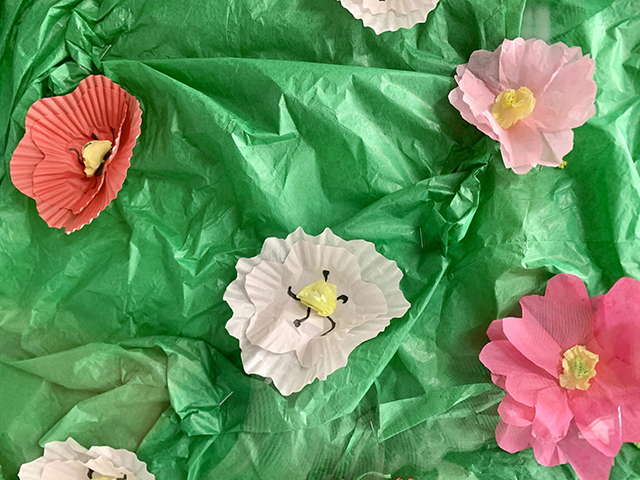
I saw a picture of the cutest cupcake liner flowers floating around and thought it would be a nice thing to give my Mother. Mom doesn’t like real flowers—her classic line is, “They smell like funerals.” Fair enough. So I figured these cheerful little paper blooms would be perfect for her Mother’s Day card, which will be exploding with Lotto Scratch-Off tickets.
And as you know, I can never resist a project that uses what I already have lying around the house. Turns out, those leftover cupcake liners from 2 years ago when I made so, so many cupcakes were worth keeping!
Here’s how to turn a pile of them into the sweetest little bouquet, A Mother’s Day card, or a springtime string of garland. It’s a craft for all – the family, rainy day friends hang, or for you, when you feel weird and lonely at night and need to give your ruminating brain a distraction.
Cupcake Flowers
What you’ll need:
- Cupcake liners (any size or color, mix and match)
- Glue (hot glue for a bouquet and garland, glue stick for cards)
- Pom-poms, or paper circles for the flower centers (get creative here)
- Green pipe cleaners, or sticks for stems, or ribbon
- Scissors
- Double-sided tape (optional)
- A jar or vase for display, or paper for a card or artwork
Instructions:
- Flatten and layer the cupcake liners. Gently press each liner flat with your hand. If they’re crinkly or a little misshapen from sitting in the drawer for five years, that’s okay! It adds a bit of texture and makes the petals look more like real flowers. Stack two four-liners on top of one another. Try off-centering some so the edges peek out like layered petals. Cut a few smaller ones for an even more layered feel. Keep the flower monochromatic or mix and match colors.
- Glue the layers together and shape. Dab a bit of glue in the center or use double-sided tape on each layer to keep them in place. For some flowers, cut around the edge to make different-shaped petals. Variety is everywhere in nature.
- Add your flower center. Pom-pom, or cut a small paper circle and glue it to the center of the top liner. Repeat the process with different colors and shapes until you’ve got a full bouquet.
- Creative Applications. For a bouquet, flip the whole flower over and glue your pipe cleaner (or a stick from outside) to the back. Repeat for all your flowers. For a card or artwork, arrange your flowers in an interesting way on the paper. For garland, hot glue the flowers, evenly spaced along a ribbon or rope. Loop the ends of the ribbon to hang and display!
Follow me for crafting and all the things on Instagram @theglorifiedtomato.













